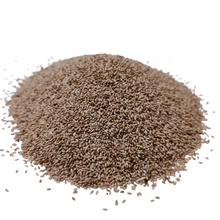Timothy Grass Seed – Perfect for Grazing and Forage Needs
Looking for a versatile, hardy grass seed for your agricultural needs? Our 100% Timothy Grass Seed is the ideal choice for lush pastures, resilient forage, and top-quality hay production. This pure 100% Timothy grass seed variety is specially formulated to thrive in UK conditions, delivering excellent performance in both dry lands and heavier soils. Whether you’re feeding cattle, sheep, or preparing for late-season grazing, this seed guarantees robust and persistent growth, ensuring reliability year after year.
Renowned for its slow germination and adaptability, Timothy grass seed for grazing provides excellent nutrition for livestock. Its long-lasting, fine leaves make it a top pick for pasture grass, and its ability to thrive in challenging weather conditions means you can count on it for spring sowing, autumn sowing, or any season when the soil is ready. Perfect for creating a Timothy pasture or boosting the quality of your hay, this seed is a farmer’s favourite for dependable forage and feed solutions.
Key Features
- Hardy grass seed designed for a range of soil types, including heavy ground and light soil.
- Excellent for grazing livestock such as cattle and sheep.
- Ideal for creating nutritious Timothy hay or forage for late-season grazing.
- Resilient and persistent grass seed suited to UK pastures.
- Thrives in both spring and autumn sowing seasons, germinating when soil temperatures reach a steady 10°C.
What’s Included in the Mixture (%):
100% Timothy grass seed for exceptional purity and quality.
How to Use:
- Sowing rate: 10-12 kg per acre for new pastures, or 5-7 kg per acre when overseeding.
- Avoid sowing when frost is forecast.
- Best sown from spring to autumn for optimal results.
- Ensure the soil temperature is consistently 10°C or above before sowing.
For detailed sowing tips and expert advice on seed care, visit our Learning Hub! Trust our Root & Rise Assurance to ensure high-quality, reliable results for all your grazing and forage needs.
By choosing our 100% Timothy grass seed, you’re investing in sustainable, nutrient-rich grass that supports your livestock while enhancing your land’s productivity. Grow with confidence and let your fields flourish with the best agricultural grass seed on the market!






